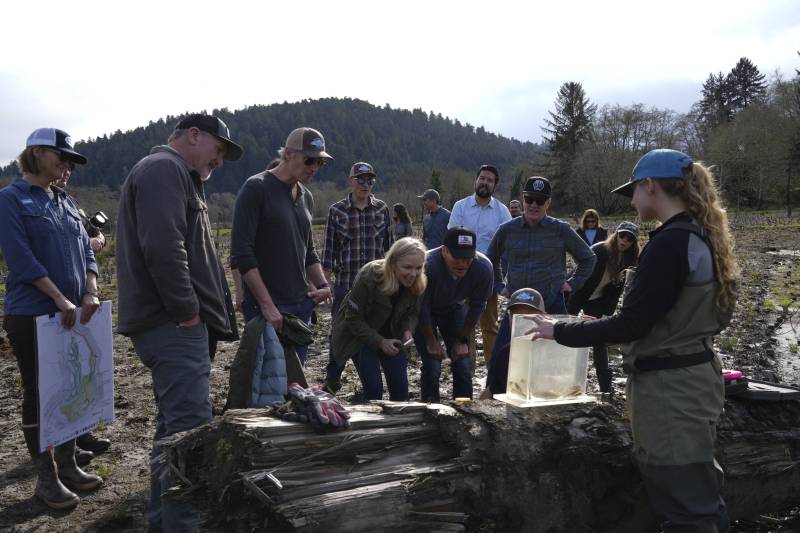Newsom’s salmon strategy includes a promise to complete an agreement by the end of the year to remove the Scott Dam and replace the Cape Horn Dam along the Eel River that have blocked salmon access to 288 miles of habitat. Once completed, the Eel would be the longest free-flowing river in the state, flowing north through the Coast Ranges before emptying into the Pacific Ocean near the town of Fortuna.
By next summer, Newsom said he would complete plans to remove the nearly 100-year-old Rindge Dam along Malibu Creek in western Los Angeles County that would give steelhead another 15 miles of spawning and rearing habitat. And by 2026 — the last year of Newsom’s term — he promised to complete the infrastructure necessary to remove the Matilija Dam in Ventura County along a tributary of the Ventura River.
These projects have already been announced and are in the early stages of development. Newsom’s plan, however, puts on record his goal to either complete them or have them approved by state regulatory bodies before he leaves office.
“I got three more years. And I want to put it all out there,” Newsom said.
Newsom’s embrace of some dam demolitions comes as the largest dam removal project in U.S. history got underway in earnest last week when crews blew a hole in the bottom of the Copco No. 1 dam along the Klamath River near the California-Oregon border. It’s one of four dams set to be removed along the Klamath.
In addition to demolishing dams, Newsom is trying to bring attention to some of the $800 million he has signed off on in recent years for projects that return some creeks and streams to their natural state so that salmon can live there.
Monday, Newsom trudged through thick mud to visit a project along Prairie Creek in Redwoods National Park. The creek had been converted to a ditch, with steep rock walls preventing the water from spilling into a flood plain where baby salmon could eat and grow before heading out to the ocean. The goal is to get the baby fish to stay longer in this creek so they can grow larger before heading out to the ocean — making it more likely they will return.
Newsom watched as Kate Stonecypher, a graduate student at Cal Poly Humboldt, pulled juvenile coho salmon and steelhead trout from the river that had been tagged with a tracking device. Researchers are still studying the results. But early indications have been positive. Fish from the creek were later found to travel 50 miles to Humboldt Bay.
But the biggest criticism of Newsom’s environmental policies has not been a lack of restoration projects but a lack of water in the rivers. Newsom’s salmon strategy includes a controversial proposal to seek voluntary agreements with major farmers over how much water they can take out of the rivers and streams. Some environmental groups, including the San Francisco Baykeeper, have called this plan “astonishingly weak.”
San Francisco Baykeeper Science Director Jon Rosenfield said California has already done lots of habitat restoration projects but has failed to boost salmon populations significantly.
“Without the essential ingredient of a river, which is the flow of water, fish … are not going to survive,” he said. “The governor is out there promising actions that are not adequate to restore the population.”
He also pledged to continue to work with native tribes, who often refer to the rivers where salmon live as their church. Newsom formally apologized to Native American tribes four years ago for how the state had treated them historically. And he has committed to partnering with them to conduct much of the work around salmon habitat.
Monday, Frankie Myers, vice chair of the Yurok Tribe, told Newsom the tribe’s work on Prairie Creek had changed the community by restoring the tribe’s purpose.
